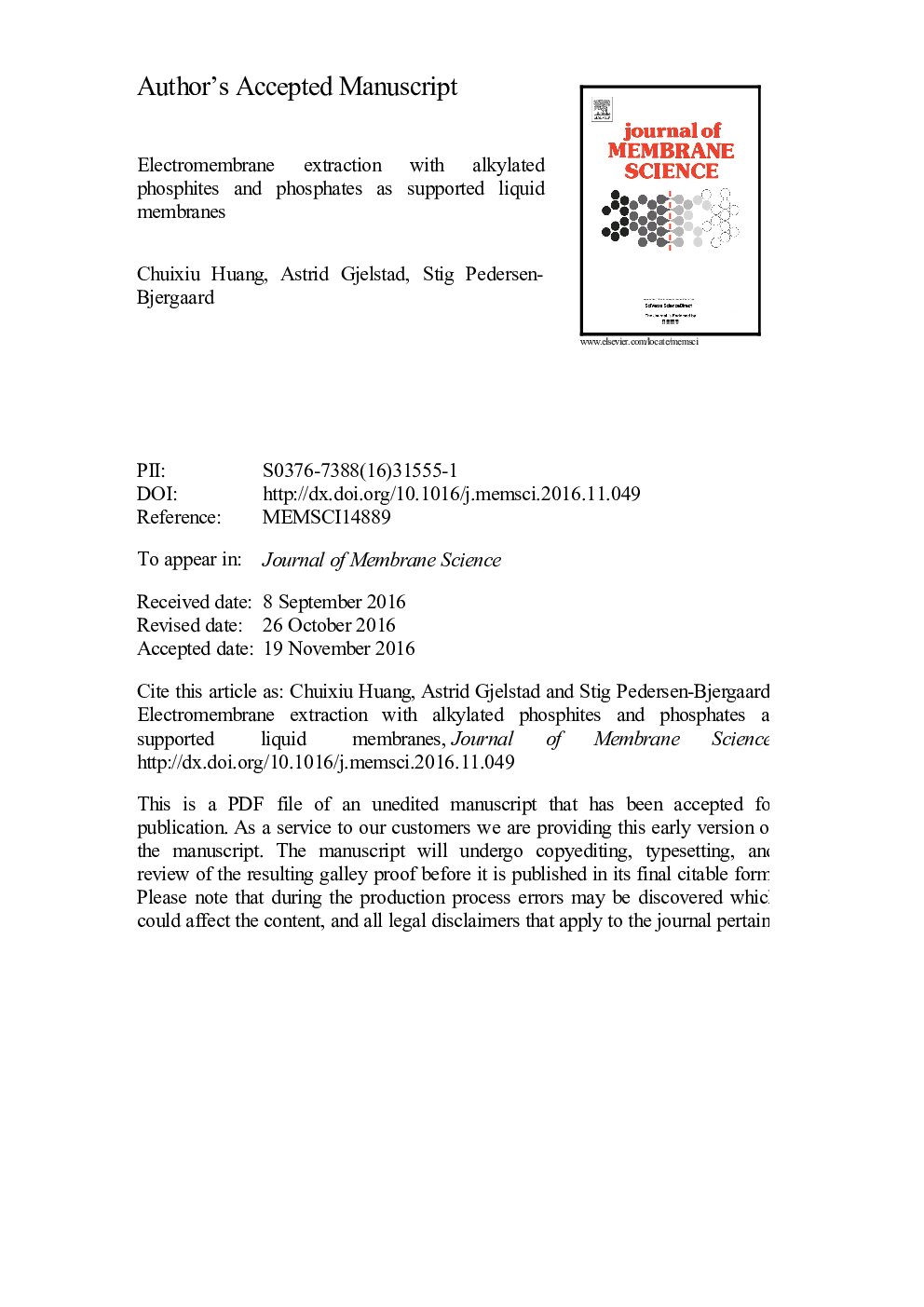| Article ID | Journal | Published Year | Pages | File Type |
|---|---|---|---|---|
| 4989096 | Journal of Membrane Science | 2017 | 25 Pages |
Abstract
A range of alkylated phosphates and phosphites were for the first time investigated as potential supported liquid membranes (SLMs) for electromembrane extraction (EME) of basic drugs from human plasma samples. Six polar basic drugs were used as model analytes for initial testing of the different SLMs. From this initial testing, bis(2-ethylhexyl) hydrogen phosphite (DEHPi), tris(2-butoxyethyl) phosphate (TBoEP), and tributyl phosphate (TBP) were found to be successful SLMs. These solvents have very high hydrogen-bond basicity, high polarity-polarizability, and no hydrogen-bond acidity. Based on this observation, hydrogen-bonding interactions were hypothesized to play a dominant role in the partition of the charged polar model analytes into the SLM. The successful solvents also contained alkyl moieties equivalent to 12-18 carbon atoms. Interestingly, similar phosphates/phosphites with aromatic character were unsuccessful. Alkylated phosphates/phosphites with less carbon atoms resulted in high current flowing in the system, whereas similar structures with >18 carbon atoms provided very low recoveries and extremely low system-current. Based on this knowledge, an SLM of TBP mixed with 40% NPOE (2-nitrophenyl octyl ether) was proposed as a new and successful SLM for EME of both polar and non-polar basic drugs. An assay based on EME-HPLC/UV with a TBP/NPOE SLM was evaluated from two-fold diluted human plasma under physiological pH conditions for both polar and non-polar basic drugs. The evaluation data were found to be acceptable for all analytes.
Related Topics
Physical Sciences and Engineering
Chemical Engineering
Filtration and Separation
Authors
Chuixiu Huang, Astrid Gjelstad, Stig Pedersen-Bjergaard,
